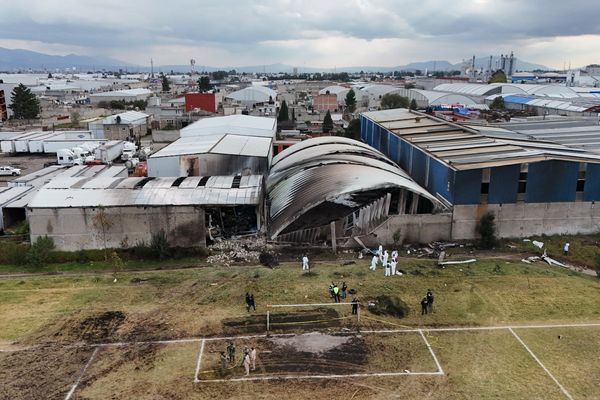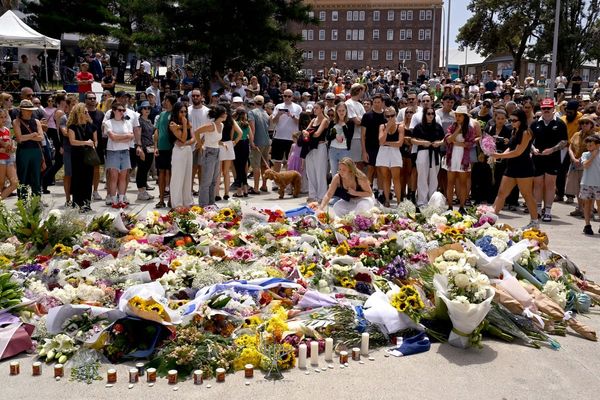
Some first meetings have an evolving impact.
In the early 1980s, I walked into the ‘chamber’ of a lawyer. She sat in a small office belonging to the Majoor Mahajan textile workers’ union in Ahmedabad, wearing a black cardigan over a khadi sari.
The centre was filled with women with baskets, bundles and potlis that could be spread over city pavements to become shops. There were sturdy women who had parked their handcarts and husbands outside to gather in the small room, seeking togetherness.
And a tiny Ela Bhatt spoke to them as a sister, listening to stories of enterprise and hope, misogyny and indifference. She assured them of the power of the poor – many more in number than possible to marginalise. She emphasised the need for them to team up, to locate the inherent strength of the feminine. The small room – latent with new-found energies and cups half-full with lemongrass-scented tea – would remain talismanic.
I had been sent to meet Ela Ben by the legendary Verghese Kurien from Anand who was trying to help me form India’s first cooperative of itinerant performing artists – the Bhule Bisre Kalakar Sehkari Samiti, forgotten and scattered artists – squatting on public land in Delhi’s Shadipur depot. But that is another story that evolved over five decades with Ela Ben as our beacon of struggle and strife with her reservoir of compassion.
“I cannot measure or monetise uncodified talent,” Kurien had told me. How can one organise disparate groups of acrobats, jugglers, puppeteers, balladeers, magicians and animal trainers, all tradition biradaris, into one compelling whole? How to galvanise new markets, distribute work, and divide possible profit? What does one do when caste rivalries create a class of hierarchy? Vested interests would blur unity with hidden agendas – real estate agents eyeing land occupied by squatters and politicians stuffing densities into slums to insure vote banks.
The formal registration of a cooperative could not limit our potential. Although a housing colony was our main objective, cooperative action required a more multipurpose engine. The diverse talent of street entertainers would need to crowd together as a habitat – performance and profession in unison. Managing them required imaginative engineering, juggling intrigue and aspiration, greed and selfless service, brilliance and mediocrity.
Kurien had given up on my questions and called Ela Ben to meet me, as she was way ahead of her times, organising the scattered and vulnerable into cohesive units for field-based action. Today, the Self Employed Women’s Association, with Sewa as its magical acronym, stands united with a growing membership of over two million women. Its spirit sprouts wherever there is a small but tenacious hope for big change.
The Bhule Bisre, with their cups half-full or brimming, have since disappeared, because most of us were not women and one couldn’t be the legendary mentor I was trying to follow. Ela encouraged our artists to stand on their own feet and never give up. While community leadership she thought would emerge with regular elections, we were told never to expect anything from the government, except a fight for space in manoeuvring smart cities.
Then came the turn of the millennium.
Godhra was spreading like smog over Gujarat’s sky. Asmita had galvanised majority hate for the ‘other’, and riots were leading a residual trail of destitutes as ‘collateral damage’.
With my friend Roysten Abel, the restless theatre director with a relentless eye for simmering context, we reached Ahmedabad to seed a story. We had been taken to the camps of the riot-affected being managed by Sewa – quietly, away from public gaze, but noticed by the powers that be. The camps were full of Muslim families together with a few Hindus.
“How can water be separated with the blows of a lathi,” said a mother whose faith didn’t matter more than the lives of her children.
A theatrical piece was to be improvised with formidable actors – Shabana Azmi, Nandita Das, Zohra Sehgal, Mandakini – playing characters travelling in a train compartment, scenographed by me as a moving train in a riot-torn state. The effort of one passenger to hide her identity as a Muslim had sparked a tentative plot to work on. We sat with Ela Ben, whose devoted help at home, the wise and dedicated Jetun Ben, had to change her name and stay hidden in Ela Ben’s home, called Toy House, for weeks while neighbourhoods were set on fire. Our meetings provided us the kernel for workshops that later became a play on The Spirit of Anne Frank staged in Delhi and Ahmedabad.
Ela Ben would continue with silent action surviving the polarisation of ‘stoic’ positioning. A guideline was defined later by her astute and resolute daughter-in-law Reema Nanavati on what to do in the situation. “Listen to what your members want and are telling you to do.” In a country where political grandstanding becomes an end in itself, this practical instruction became an empowering, pragmatic agenda.
Ela Ben’s common-sense service mantras stemmed profoundly from feminine overviews, sometimes served over countless delicious meals at Toy House with its cherished legacy. I was always moved when, as a doting grandmother, Ela would show me year after year the doodlings of her enormously talented grandson Som, done on the wall of her room. Preserving the drawings at different levels, ground up, evoked Som’s growing up. The other grandson Rameshwar, a virtuoso, reflective and determined, remained Ela’s companion and shares her humour.
Ela’s space and home, managed and maintained ever so sensitively by her son Mihir, is exceptional. He is a son all parents need and will be proud of. Everything evolves all around – yet the family remains central as witness to a fast-changing world as the most inspiring lessons of a resilient home life.
With globalisation still in its liminal stage, I found myself in 2006 struggling to steer a taskforce on creative and cultural industries as its vice-chair in the government of India’s Planning Commission that remained reticent about its relevance. We were seeking to synergise the limiting agendas of nine different and differing government departments and ministries supporting traditional livelihoods for creative upskilling. Trying to position a new National Mission as a collective legacy enterprise was a tough call.
Although Ela Ben had already served as a full-fledged member at Yojna Bhawan, she readily agreed to become a part of our taskforce to strengthen a more coordinated strategy to unite the whole from parts doing less and less, using more with more. I recall Ela sending me samples of quilt covers priced at Rs 7-10 made of patches of recycled mill cloth and discarded ready-to-wear. The emotional retina of womenfolk becomes active with the threading of a needle. Embroidery and applique bring amazing spontaneity in asymmetrical design, doing so much more with so little!
Alas, our ear on the ground approach, seeking India’s hand-crafted edge within emerging global trade imperatives, fell on deaf ears. Even our chairperson, a Planning Commission member herself, was not at all convinced about innovation and interdependence of traditional skills. Ela, however, stood by my side, writing letters about the urgency to redefine and reposition the tenacity of vulnerable micro-efforts for mainstream attention. Although privately, she advised me to move on with the government’s cup left half-full and to start all over again with something small in specific locations.
When Bangladesh got its first Nobel, recognising the movement on micro-credit, the Indian subcontinent was already bristling with seminal stirrings of the poor, galvanised for collective savings. Ela Ben’s much-trodden path has since opened new vistas and hubs for collective self-help group action across South Asia.
Once again in 2015, Sewa joined our endeavour with the Asian Heritage Foundation and the Smithsonian, US, to host a major transdisciplinary initiative of Sasian Journey as a first for all our neighbouring countries to experience a joint celebration of their livelihood enterprises. The many gathered, exalted in Ela Ben dancing with us to music from India and Pakistan, as indeed she surprised the paparazzi by walking on the ramp as a showstopper for her own artisan-owned craft brand, Hansla, named after a Sewa member. That was Ela, not shy of anything that had an authentic and intrinsic sense of becoming useful for a just cause.
In the last chapter of our lives, keen to bring coherence and continuity, pedagogies and transmission of skills have come to mean everything. I have amassed a huge, tangible collection to bequeath and a larger dream to build a centre of excellence for cross-cultural studies. Education pursuing traditional knowledge systems of South Asia to create original content for the knowledge society is my principal agenda. Hunar-Kaushal is our lifeline to swim in the rapids of a nation in flux.
Exactly two years ago, I received a letter written in Ela’s hand and posted to me. Brought to my doorstep by the disappearing Dakia whose absence will soon cease to bother us, I cherish her message and medium. Ensuring the vital role of skill in the future of work, she wrote:
30th November, 2020
Dear bhai Rajiv,
I was very pleased to read both your documents that you sent me. Hunnarshala is my favourite, as you know! Thank you.
I see a great future of women, work and peace in Hunnarshala. It is a way to Swaraj.
Hunnarshala is the thread that weaves a society together. When one has work, there is an incentive to maintain a stable society. One cannot only see the future, but one can plan for it and invest in next generation. Life is no longer just about survival, but about investing in a better tomorrow. Work builds peace, because work gives people roots, it builds communities and it gives meaning and dignity to one’s life. Here, women are the key to build sustainability in Hunnarshala.
In Hunnarshala lies the future of work, women’s dignity and peace for the communities.
Hunnar is not only the past, it is the present building the future.
I pray for more shakti energy to join you in Hunnarshala.
With best wishes to you,
Ela Bhatt
My generation of Midnight’s Children didn’t quite figure out what being a Gandhian was about. Being Indian came easier. Perhaps we have just begun to understand that
- self-gratification is okay, but secondary to being selfless
- cooperative action could be a challenge but remains a gamechangers
- passive resistance is very difficult and ahimsa was easier said than done
- truth is subjective like dharma
- and satyagraha on a personal front meant being fearless. Speaking one’s own truth to power is achieved best through quiet action.
No, my soulmate and mentor, dear eternal Ela – for a restless artist like me, the cup will remain half-empty and my karma will continue with its enchantment of sweet despair. Move on, sweet atma, your life will continue to inspire many and keep Bapu alive.
Newslaundry is a reader-supported, ad-free, independent news outlet based out of New Delhi. Support their journalism, here.







